Adventist Leaders Approve New Strategic Plan to Strengthen Mission, Empower Local Churches
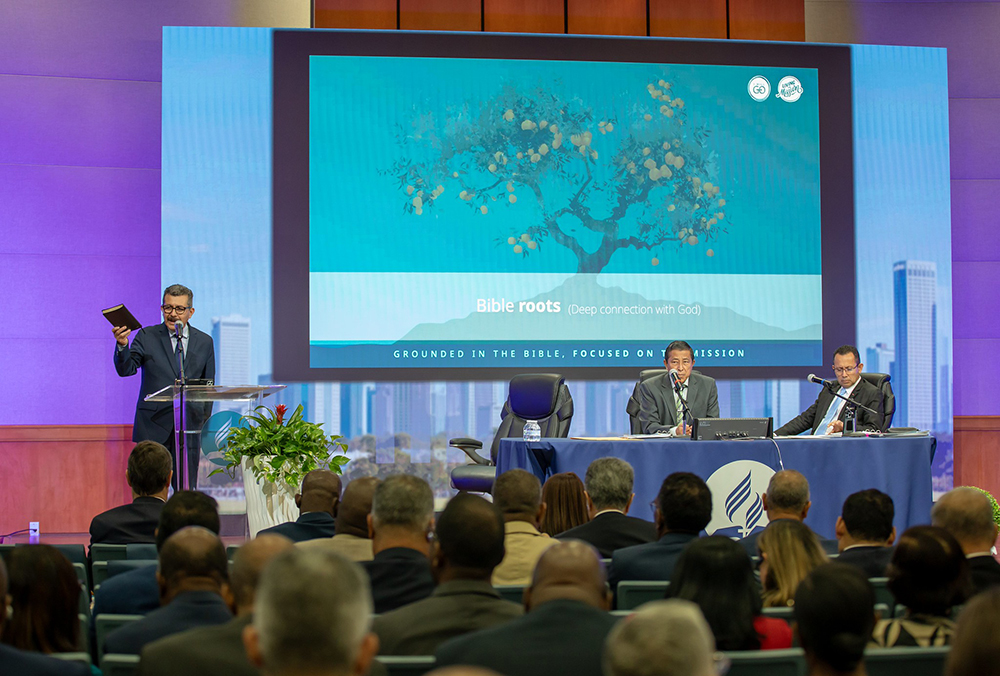
IAD President Abner De los Santos introduces the new 2026–2030 strategic plan on Nov. 13, 2025, during the church’s Annual Council in Miami, Florida, emphasizing that the church’s purpose remains mission and calling every member to “live the mission.” [Photo: Keila Trejo/IAD]
November 20, 2025 | Miami, Florida, United States | Libna Stevens, Inter-American Division News
The Inter-American Division (IAD) Executive Committee voted a bold new strategic plan on Nov. 13, 2025, during Annual Council meetings in Miami, Florida—a plan designed to anchor the church more deeply in Scripture, empower local congregations, and mobilize every believer for mission across the territory.
Introducing the plan, IAD President Pastor Abner De los Santos underscored that the Seventh-day Adventist Church exists for one purpose: mission.
“The Word of God invites us to mission. The reason the church exists is mission,” he said. “Every new member who joins the church must be born a missionary.”
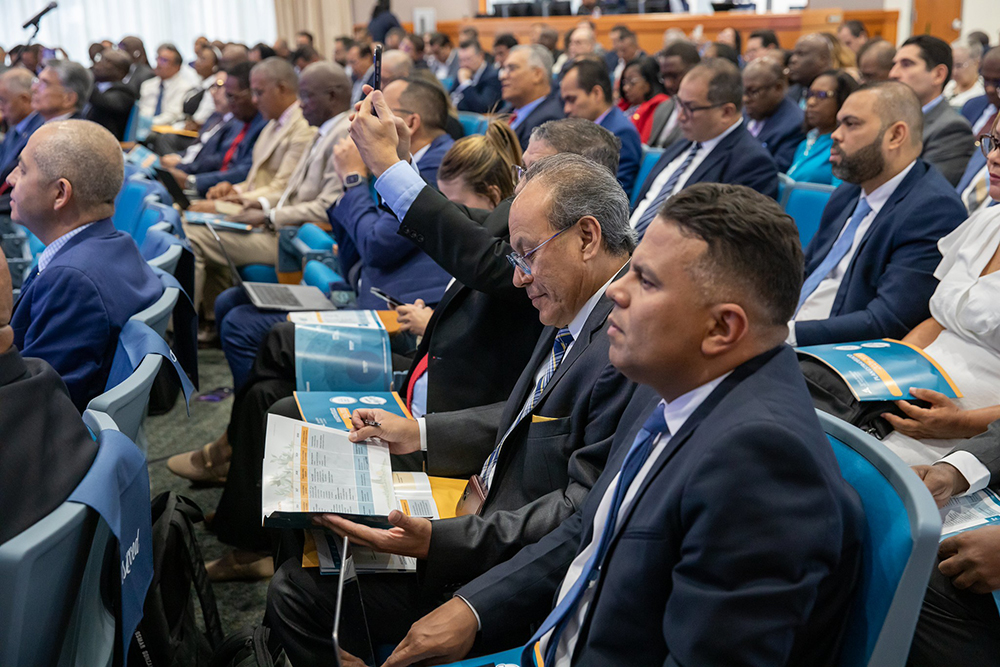
Executive committee members follow the presentations closely during the launch of the IAD’s new strategic plan. [Photo: Keila Trejo/IAD]
Pastor De los Santos called for leaders “to loosen the hands of the church,” explaining that excessive top-down programs often clutter local calendars, limiting the space and freedom congregations need to engage in real mission. He emphasized that the strategic plan is rooted in the guiding framework Grounded in the Bible, Focused on the Mission.
A Tree That Represents Spiritual and Missional Growth
To illustrate the core principles of the plan, Pastor De los Santos presented an analogy of a tree—symbolizing the spiritual and organizational health needed to sustain long-term mission work.
“The roots call us to deep communion with God,” he explained. “The trunk represents our identity in Christ. The branches reveal unity and collaboration. The fruits are lives transformed.”
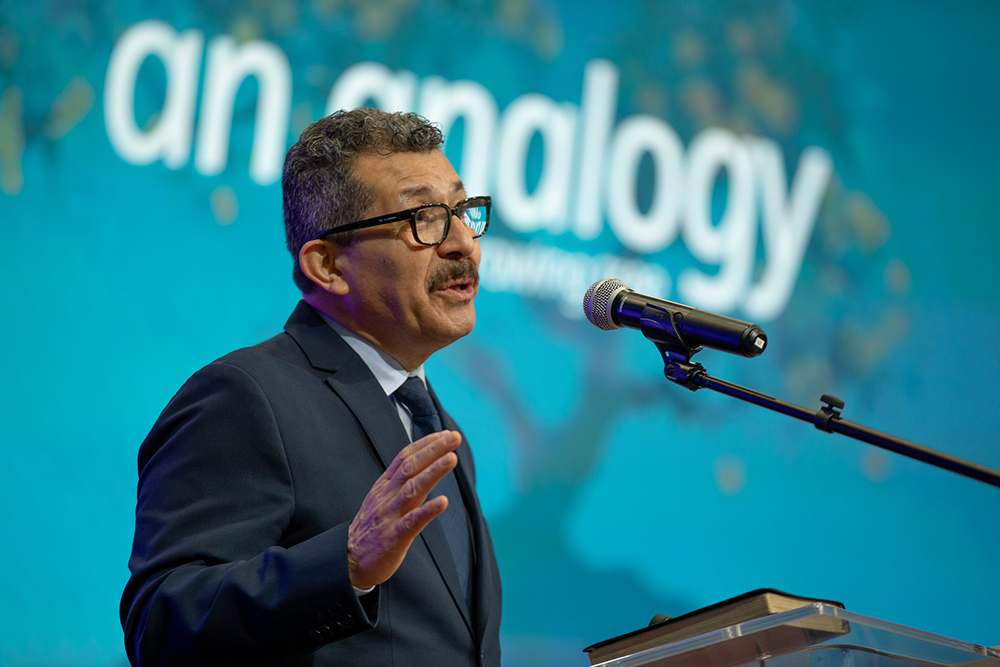
IAD President Abner De los Santos explains that spiritual renewal must precede organizational action as he presents the tree analogy, a visual guide illustrating the four strategic pillars of the 2026–2030 plan. [Photo: Keila Trejo/IAD]
To anchor the strategic plan in practical action, Pastor De los Santos outlined three major initiatives that will drive mission engagement across the quinquennium:
- OneVoice27 – Joining the global church in a major celebration to connect large-scale media outreach with on-the-ground engagement by local congregations so that interest generated online and on-air leads to Bible study and membership pathways.
- Impact 2028 – Establishing at least 100,000 preaching centers across Inter-America.
- Every Church, One Church – Every church planting one new congregation within five years.
Grounded in Matthew 28 and Revelation 14, said Pastor De los Santos, the new plan, “I Will Go: Living the Mission” aims to simplify and align the actions of every church entity while empowering local congregations to experience spiritual renewal and mission-driven growth.
Alongside these large-scale initiatives, the plan is built on four spiritual and strategic pillars.
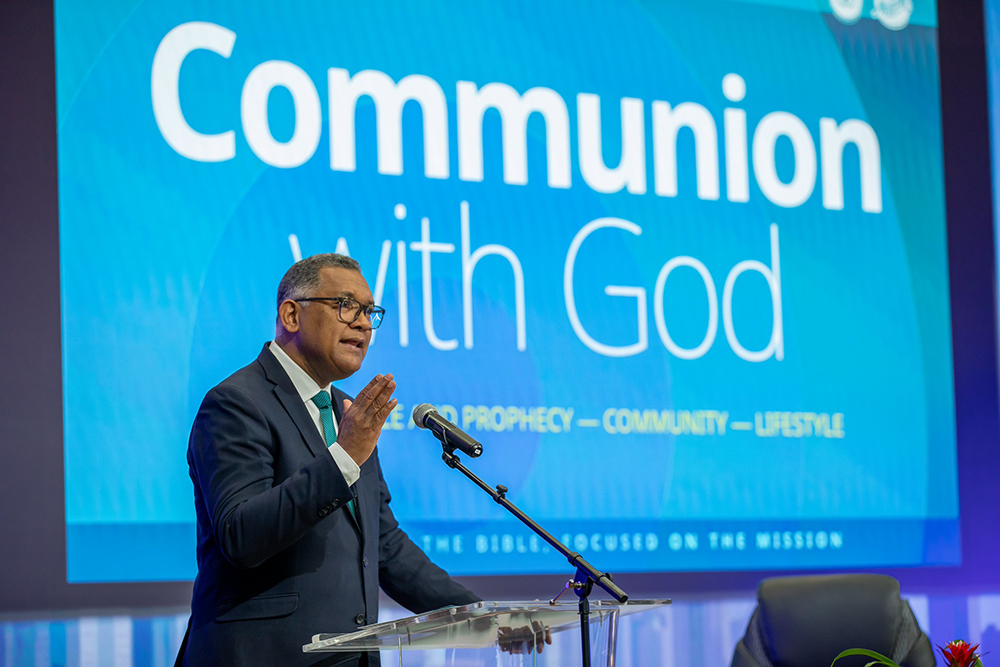
Pastor Roberto Herrera, stewardship director of the IAD, outlines the first strategic pillar—Communion with God—highlighting prayer, Bible study, and spiritual maturity as the foundation for all mission initiatives. [Photo: Keila Trejo/IAD]
1. Communion with God: The First Priority
Stewardship director Pastor Roberto Herrera emphasized that Communion with God appears first by design.
“We cannot speak of identity, unity, or mission unless we are a church rooted in God’s Word and connected with Him.”
He explained that the priority focuses on helping members experience salvation in Christ and nurturing spiritual maturity. Organizationally, it calls for creating spiritual environments in local churches through prayer, Bible study, Spirit of Prophecy engagement, increased attendance to weekly services, and promoting wholistic Adventist living, he said.
“The Division is not bringing a list of programs,” Herrera said. “These are strategies. How they are carried out is for each union and field to determine.”
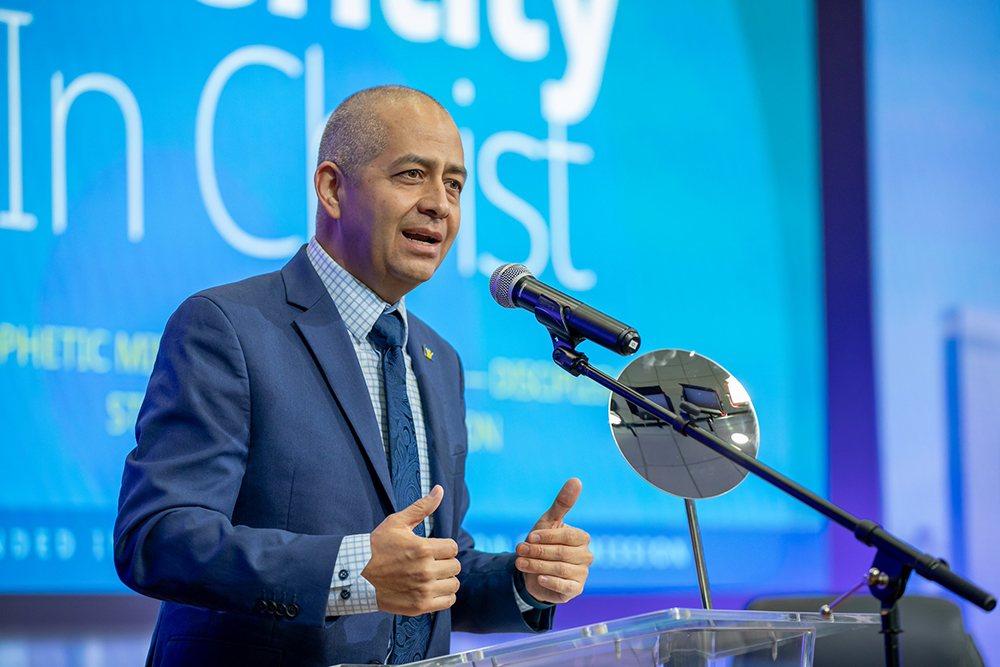
Communication director Abel Márquez illustrates the importance of Adventist identity using the metaphor of a mirror, urging members and leaders to reflect Christ clearly in every aspect of discipleship. [Photo: Keila Trejo/IAD]
2. Identity in Christ: Remembering Who We Are
Communication director Abel Márquez used a mirror to illustrate the second pillar, citing James 1.
“This initiative seeks to ensure that when we look in the mirror, we know who we are,” he said, “and that when others look at us, they know our identity is grounded in Christ Jesus.”
Five initiatives—including leadership formation, prophetic understanding, discipleship training, and educational involvement—aim to strengthen Adventist identity at every level of the church. The “Disciple 360” initiative will generate complementary programs such as “Creative Disciples” and “Digital Disciples,” which will support One Voice 2027.
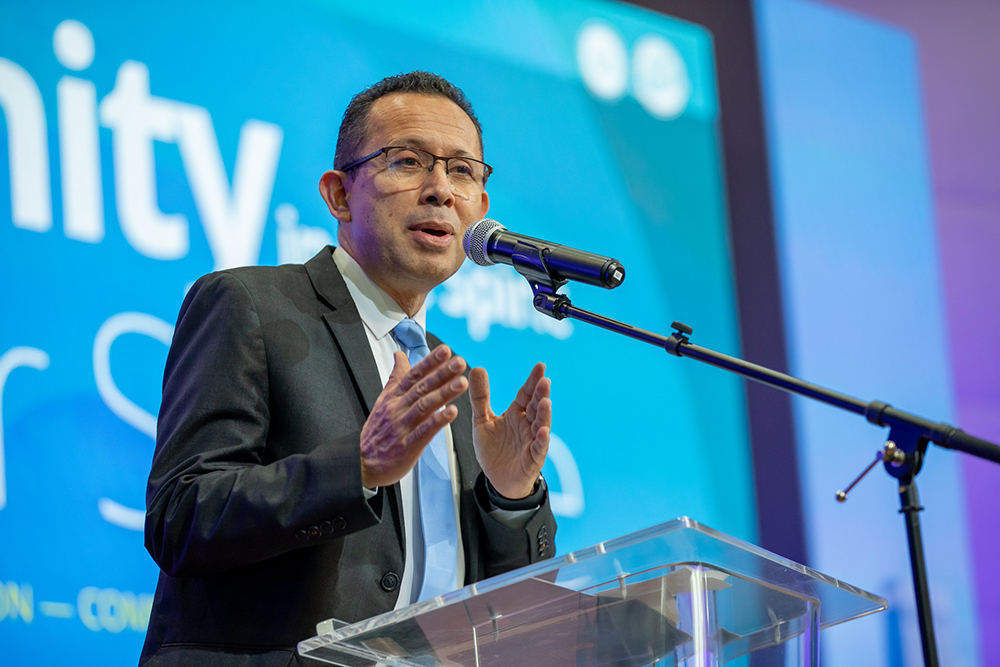
Undersecretary Pastor Álvaro Niño explains the pillar of Unity in the Spirit for Service, emphasizing Christ’s method of reaching people through compassion, connection, and practical service. [Photo: Keila Trejo/IAD]
Undersecretary Pastor Álvaro Niño highlighted that unity leads naturally to service.
“The church is the means appointed by God for the salvation of souls,” he said. “It was organized to serve, and its mission is to preach the gospel.”
He outlined the two main initiatives: sustainable community projects and promoting healthy relationships using biblical principles of communication and conflict resolution.
“Service is universal,” Niño said. “Like music, it communicates beyond language. Through service we express compassion and hope.”
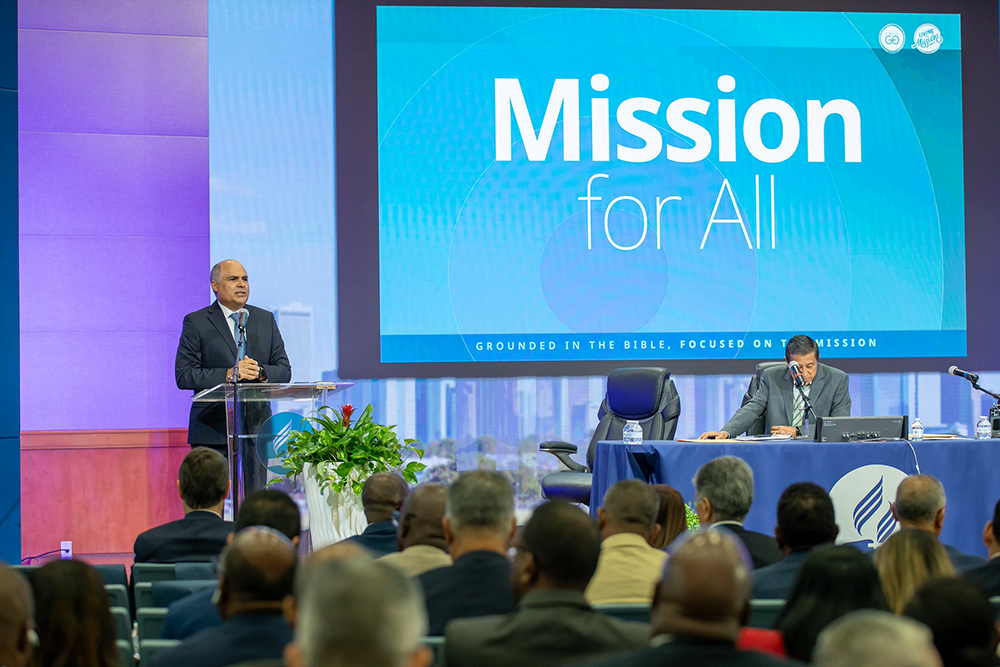
Pastor Josney Rodríguez, IAD ministerial association secretary, highlights the “Mission for All” strategic plan which includes a large scale initiative of organizing 100,000 preaching centers in 2028. [Photo: Keila Trejo/IAD]
Ministerial secretary Pastor Josney Rodríguez emphasized that mission is both a spiritual mandate and an organizational responsibility.
“Evangelism and mission are a spiritual and organizational commitment to share the truth with every nation, tribe, language, and people,” he read from the plan.
“Mission for All means mission everywhere and by everyone,” Rodríguez added.
He explained that fulfilling this mandate requires intentional actions that expand the church into new territories, strengthen the Adventist presence, plant new congregations, implement consistent policies, and consolidate progress to ensure long-term continuity of the mission.
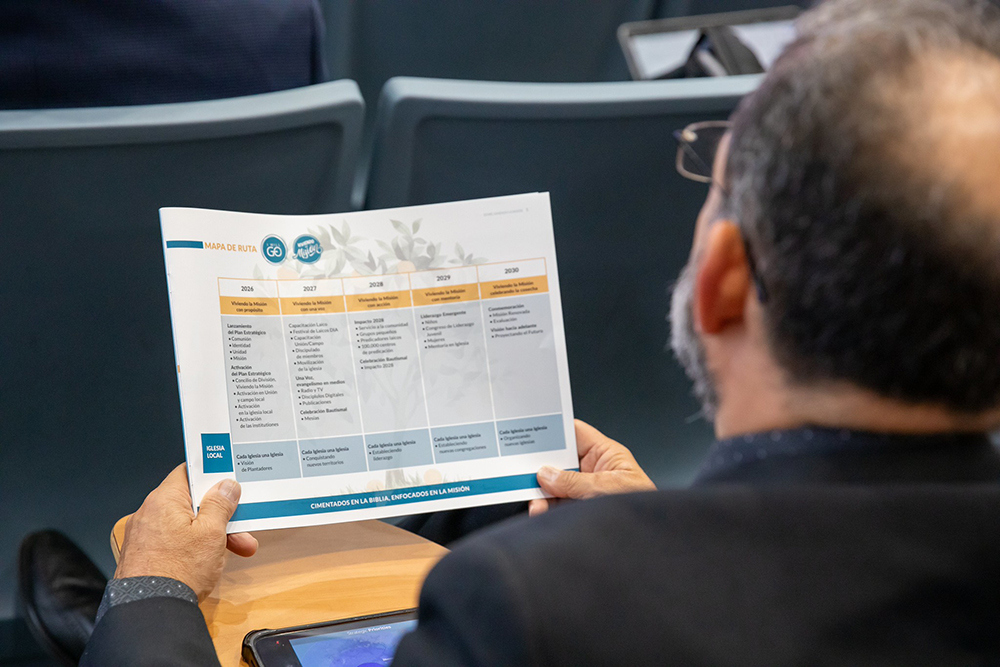
Pastor Guenther Garcia, president of the Guatemala Union, reviews the strategic plan document following its presentation to the executive committee. [Photo: Keila Trejo/IAD]
Leaders across Inter-America responded warmly. Many praised the plan’s clarity, biblical foundation, alignment with the General Conference, and its practical structure that empowers local churches while allowing contextual adaptation.
Pastor Pierre Omeler, general vice president of the General Conference, commended the plan, noting: “It is extraordinary—grounded in the Bible, aligned with the GC strategic plan, involving all members, and flexible for local contexts,” he said. “OneVoice27 and 100,000 centers of evangelism will set the territory on fire for Jesus.”
Luis Trundle, executive secretary of the Honduras Union, urged the inclusion of measurable benchmarks. “A baseline would allow us to track progress mid-quinquennium and evaluate how these initiatives are moving the church,” he said, adding that retention and reclamation must remain core priorities.
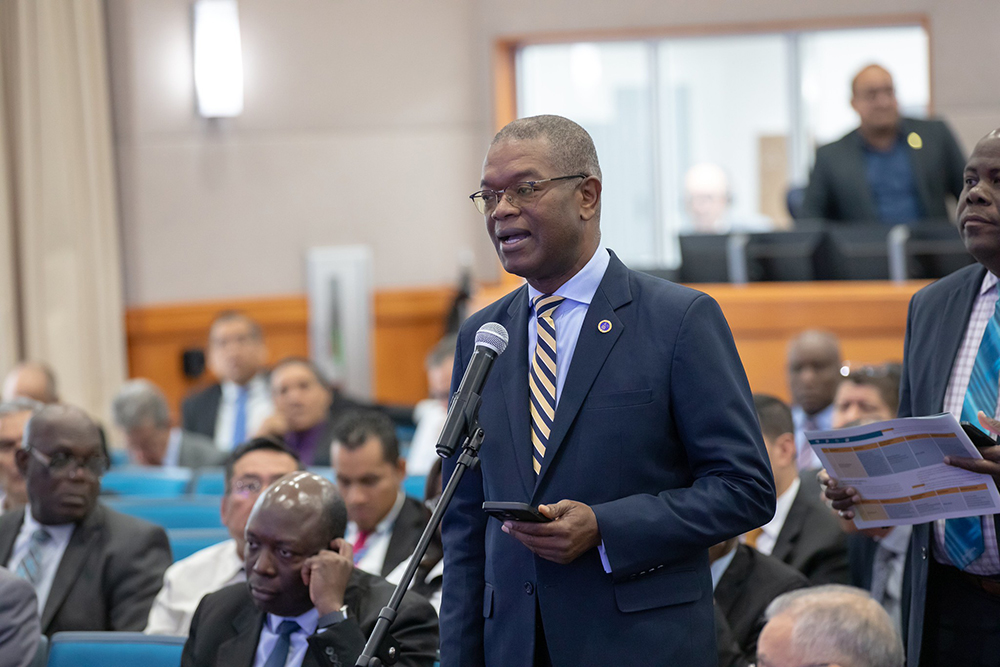
General Conference Vice President Pierre Omeler expresses strong support for the plan, noting its biblical foundation, alignment with the global church, and ambitious initiatives like ‘One Voice 2027’ and ‘Impact 2028. [Photo: Keila Trejo/IAD]
Johan Mendoza, youth ministries director for the West Venezuela Union, praised the plan for the spirit of unity it inspires. “Our church needs this—working together without seeking prominence, with young people, women, children, and adults all embracing a single vision,” he said. He described the plan as “simple, yet powerful in the name of the Lord,” and expressed confidence that it will reach even the most remote corners of Inter-America. “We are ready to replicate it and carry this message to every corner of West Venezuela,” he added.
Others suggested strengthening retention efforts and ensuring visual media reflects the cultural diversity of the IAD. Several more committee members affirmed their commitment to implement the plan across their fields.
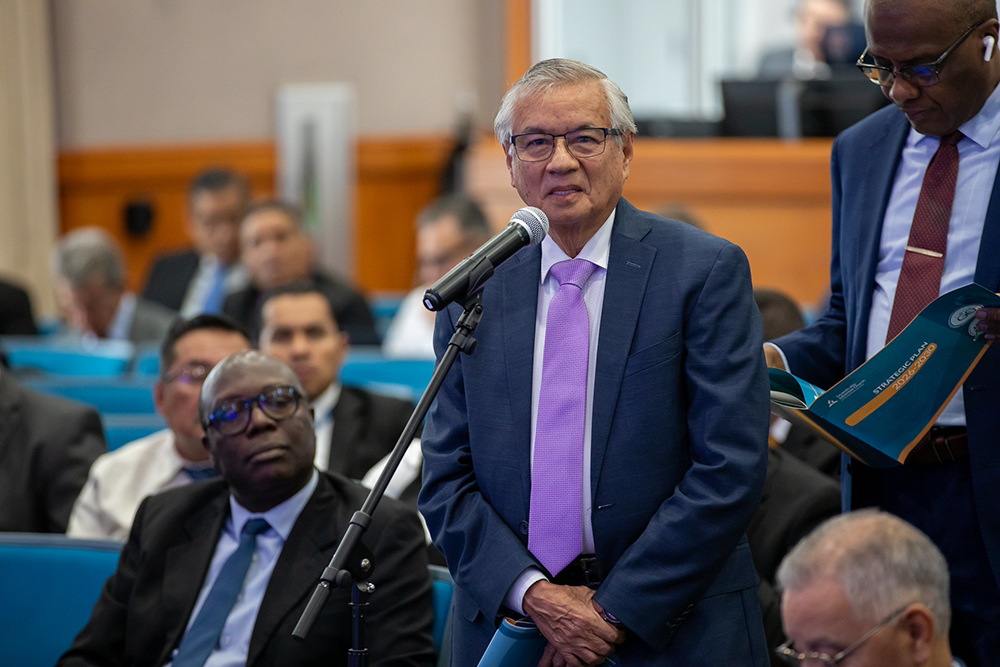
Perfecto Trujillo, lay delegate, recommends adding simple indicators to help churches measure progress under the new strategic plan. [Photo: Keila Trejo/IAD]
Pastor De los Santos expressed gratitude to the team that developed the plan through months of collaboration and review. He announced a division-wide leadership summit for March 1–4, 2026, in which institutional leaders and administrators from every union and local field will refine roles, establish evaluation measures, and outline long-term planning.
“Our vision is to review this plan periodically,” he said. “We want these initiatives—One Voice 2027, Impact 2028, and Each Church, One Church—to have a real impact on the church.”
The plan was adopted unanimously, marking the beginning of a quinquennium focused on deepening spirituality, strengthening Adventist identity, uniting in service, and mobilizing every believer to live the mission across Inter-America, church leaders said.

A committee member snaps a photo during the presentation of Pastor Abner De los Santos, IAD president on the new 2026–2030 strategic plan. [Photo: Keila Trejo/IAD]
Visit IAD’s photo gallery of the Annual Council meetings HERE